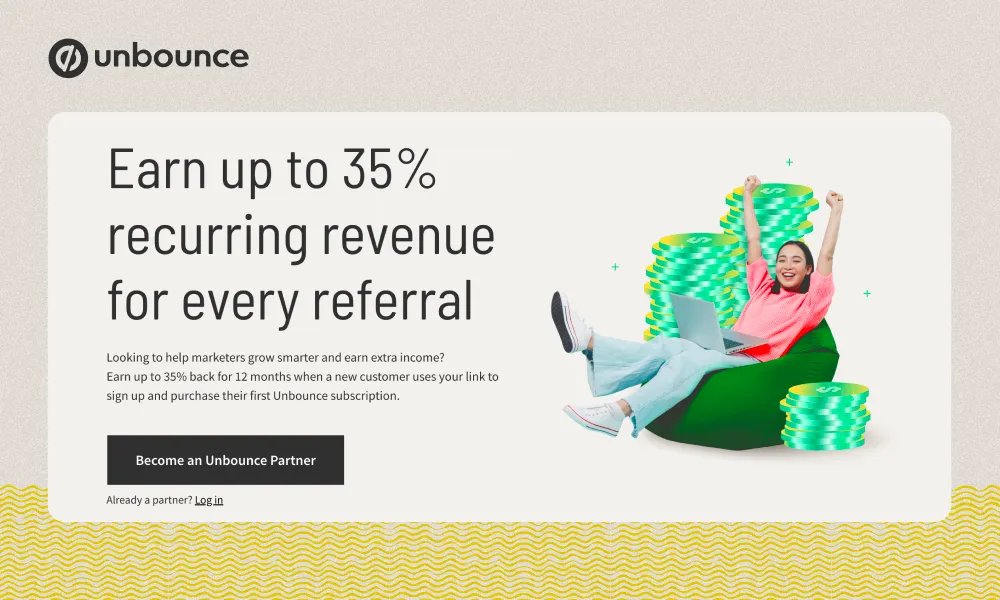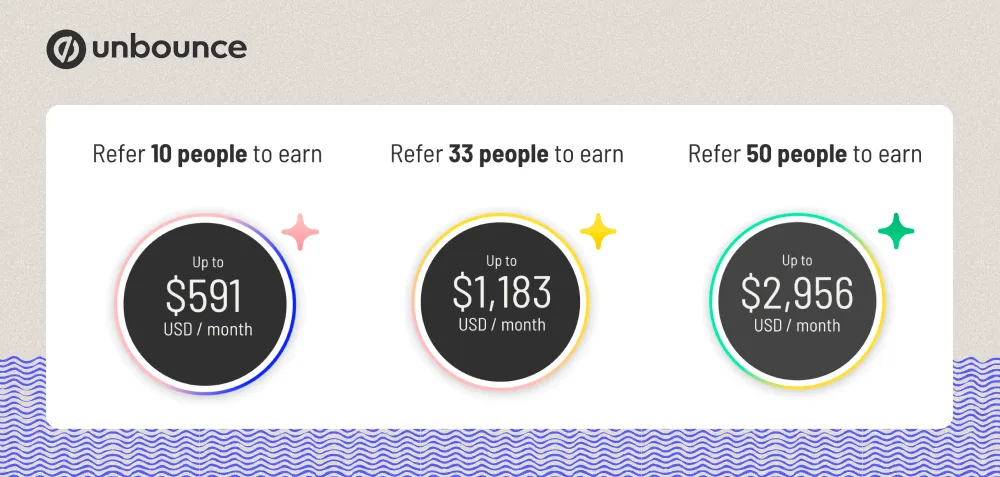Every business has a unique path to launching its partner program. Maybe you’ve been getting inbound requests from partners wanting to work with you. Maybe someone in your company sees the potential of partnerships as a revenue channel. Maybe that someone is you. As a senior product manager at PartnerStack, and former manager of our customer success team, I’ve worked with many companies over the past years to help launch and migrate their programs.
The most common partner program launch mistakes in 2024
What I’ve observed is that launching a very basic partner program isn’t that difficult… but that also makes it easy to miss some of the most essential steps of launching a program that actually succeeds. In this article, I’ll cover the most common mistakes made when launching new partner programs. Along the way, I’ll teach you how to avoid every single one and set your program up for success.
1. Setting vague partner program goals
One of the first questions we ask companies during PartnerStack onboarding is what their goals for the program are. And often, we hear answers like "get some sales" or "onboard a few partners". Those are, of course, good things to do. But the issue with vague or non-specific goals like these is that they do nothing to let you know if your program is driving meaningful results for the business, or help them prove those results to the rest of the company.
I recommend setting a clear set of SMART goals for your partner program from the very start. SMART goals are goals that are:
- Specific
- Measurable
- Achievable
- Relevant
- Time-based
Related: Learn effective SaaS OKR strategies.
Your company might already set SMART goals for other types of projects, or use another goal-setting framework such as OKRs (objectives and key results) designed to make goals more measurable and actionable. For example, a non-specific goal like “onboard a few partners” would become “acquire and onboard 50 new partners within the next 12 months."
Beyond the core metric your program is meant to drive, consider highlighting how you’ll track other metrics like:
- Rate of partner acquisition
- Audience reach of program
- Average customer value/deal size
- Revenue driven by program
- Conversion and retention rates for partner-attributed customers
- Incrementality (how advertising contributes to conversion rates)
You’ll also need to think about how you track all of the above and the tools other teams can use to get involved. If other teams feel left in the dark, they won’t know why they should care about the program or how to support it — and the success of the program suffers. By setting clear goals for your partner program that other teams in your company feel invested in, you can ensure that your program is on track to deliver real revenue — and that your colleagues will help you make it happen.
Looking for help on setting some goals for your program? Feel free to reach out and we’ll get you sorted!
See more: How to set strategic partnership KPIs to drive revenue in 2024.
2. Not identifying ideal partners
What kinds of partners are you hoping to recruit? The answer shouldn’t be all of them. While it can be tempting to focus on recruiting as many partners as possible, this doesn’t actually do much to drive results. Many partnerships managers find that a majority of revenue from their programs comes from a minority of highly-engaged partners.
That’s why it’s important to identify who your ideal partners are before you launch your program. Your target partner personas will determine everything from how you incentivize and reward partners, the resources you’ll want to provide them with and how you’ll promote your program to partners.
The first question to ask isn’t actually about partners, but customers. Specifically:
- How do customers discover and buy your product? Is it something that they do research for online and typically purchase themselves, or is it a more complex product that might require support from an agency or reseller? Thinking about the different stages of your buyer’s journey can help you identify touch points at which they might interact with partners.
From there, you can start to think about:
- What type of business do your ideal partners run? Are they affiliate marketers that promote products through online content, or agencies that work with your target customers directly? Could they already be your customers?
- What would motivate them to join a partner program? It could purely be revenue, but often partners are looking to market and sell products that add value to their portfolio, especially products that integrate together.
- How will you reach and recruit those partners? An email blast to your existing audience won’t be enough.
3. Over-complicating commission models
Earn 30% on a customer’s first 8 purchases of product X, 35% on a customer’s first 5 purchases of product Y, and $25 for a customer’s first purchase of product Z. Commissions will be earned 60 days after payment from customers.
Did you follow that? No? Your partners won’t either, yet one of the most avoidable yet common mistakes new programs make is over-complicating their commission structure. When you make it easy for partners to imagine what they can earn, you make it easy for them to pick your program over a competitor’s. Plus, a simpler commission structure is easier for you to communicate. For example, Unbounce pays partners up to 35 per cent of the recurring revenue for every customer they refer and provides examples of how much partners could earn directly on their landing page.


The main decisions you’ll want to focus on making when designing your commission model is whether partners earn a flat commission from each purchase they drive or whether they earn a recurring percentage of the revenue associated with their referrals.
Not sure what the right partner commission model looks like? Check out other partner programs in your industry — after all, you’ll be competing with those programs for the same partners, so you’ll need to know what you’re up against to ensure your offer stands out.
4. Ignoring partner onboarding
Once you see that partners are signing up for your program, you might assume that you’re on the path to success. But there’s no guarantee those partners will actually sell anything unless you help them do it.
We consistently see that programs that prioritize partner onboarding and engagement perform better, and partnerships managers see it too.
When discussing how monday.com grew partner driven sales by 200% YoY, Dor Winter, Referral Partnership Manager, said PartnerStack "enables us to concentrate on what really matters, work with the partners, engage with them and provide them marketing tools."
Don’t expect that partners will reach out when they need help, even if you make it easy to do. Be proactive in how you onboard partners and provide them with resources that help them sell your product.
"Before PartnerStack, it was really difficult to manage and communicate with the partners we work with. We had to wait two, three, four months until we actually understood that we need to provide those tools to the partners we work with," he said. 'PartnerStack allows us to communicate those partners and to provide them the right tools in order to generate revenue from day one."
5. Managing partners across multiple systems
The truth is that most partner relationship management (PRM) tools don’t include everything you need to manage your partner program or to scale into multiple programs. PRMs usually focus on storing partner contact information and hosting resources for partners, which are useful features, but only a fraction of what programs — and their partners — need to succeed.
Most PRMs are missing features that we see as crucial to program success, like automated emails triggered by partner activity, learning management systems (LMS) and partner certification and automatic partner payments. And the vast majority of PRMs can only handle one type of partner program, limiting your ability to scale partnerships revenue across new channels.
You can try to build a makeshift approach using multiple systems, and many companies do in an attempt to reduce costs or reuse software they already pay for. But then these things happen:
- The systems don’t talk to each other. Engineering teams end up spending several sprints trying to get information into a single source of truth and keeping things synced across systems requires constant attention.
- You annoy your partners. They need to log in to multiple platforms to access basic information and hope that they receive their payments on time. And when your partners feel frustrated, they’ll start looking at competing programs to replace yours with.
- It costs more than a single platform. The makeshift approach ends up being more expensive than a platform that can do it all — if not in the actual dollars spent on the software, then in both the human hours spent holding everything together.
- Your team can start losing confidence in the program. Partnerships managers often face an uphill battle in selling the value of partnerships internally. When other teams don’t know where to go to find information about program performance or have to do extra work to hold multiple systems together, it makes it even more likely that they’ll start to wonder whether partnerships are really worth it.
We prioritize building features into PartnerStack that other PRMs won’t touch, because partnerships managers constantly tell us that having everything in a single platform helps them and their partner programs succeed. PandaDoc grew monthly recurring revenue by 47% YoY with PartnerStack and spoke to the power of consolidating their programs into one tool. "We're all using the same language, the same features, the same tool to reference. It helps eliminate some of the places where we're getting lost in translation," explains Bernardo Castaneda, former Senior Manager of Partnerships and Affiliates at PandaDoc.
To get ahead, you have to plan ahead
Launching a partner program can be both incredibly exciting and genuinely stressful. Both feelings can make it tempting to take shortcuts, but doing things faster at the start won’t help you get ahead. Spending just a bit of time thinking about what your program’s goals are and what your partners will need to help achieve them makes a huge difference in the results. And if you’re not sure where to start —the PartnerStack are here to help.










.webp)







